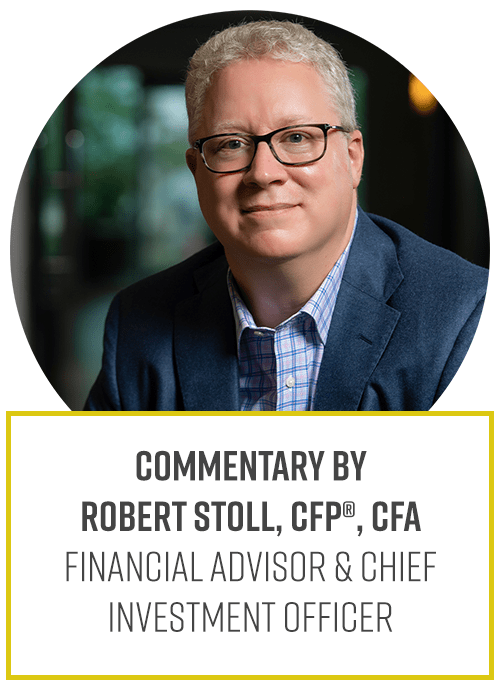How to Choose Open Enrollment Benefits
by Rob Stoll, CFP®, CFA Financial Advisor & Chief Financial Officer / September 13, 2023
The end of summer and beginning of fall marks an important shift in the calendar for many. The smell of pumpkin spice lattes are in the air, football starts, and our employers send us emails about the upcoming open enrollment season. Benefits offered during open enrollment are very important. They can make up a significant part of your overall compensation package. But they often limit your ability to change these benefits to a short 2-3-week period each year. It’s best to understand how these benefits can help you so you know how to choose open enrollment benefits when your company’s enrollment season begins.
How Valuable Are Open Enrollment Benefits?
It’s easy to underestimate the value of the benefits you receive from your employer. We often see the cost of these benefits coming out of our paychecks and view the cost as a “negative” hit to our overall pay.
But ask anyone who is paying for health insurance out of pocket. You’ll quickly realize that employers pay a lot for your benefits. Health insurance alone can cost companies $20,000 or more for each covered employee. Throw in other benefits, such as basic life insurance and matching 401(k) contributions, and the cost of offering benefits to employees really adds up.
It’s not uncommon for the value of offered benefits to be 10-20% of an employee’s overall compensation! And since companies have buying power when purchasing these benefits, employees get more benefits per dollar. Especially more than if the employee purchased them on their own. That’s why it’s worth the time and effort to understand your open enrollment benefits. You want to get the most out of them.
When is the Open Enrollment Period?
For ongoing employees, the annual open enrollment period is typically late in the year, between September and November. It only lasts a short 2-3 weeks. So it’s important to be aware of when it’s happening so you don’t miss out on any benefits.
However, if you have a Qualifying Life Event outside the normal open enrollment period, you may be able to change your benefits at any point in the year. These life events include:
- Marriage or divorce
- Birth or adoption of a child
- Loss of health coverage from a spouse
In these special cases, your company’s human resources department should be able to help you. They might be able to change your benefits, particularly for health insurance.
Open Enrollment Health Insurance
Health insurance is one of the most valuable benefits companies offer to their employees. Even though companies pick up most of the cost of the insurance premiums, selecting the right plan is critical. This is so you’re not stuck paying excessive amounts of out-of-pocket expenses.
We have a great video that covers everything you need to know about picking the right health insurance plan in open enrollment. Here are the key factors you’ll want to consider.
Premiums: Companies will pick up a significant portion of the premium cost. But employees often have to contribute a portion of the cost through payroll deductions. These premiums can vary by health plan type and number of people in your household that insurance will cover.
Deductibles: This is how much you have to pay for your healthcare needs before the insurance kicks in. Co-pays each time you visit a doctor are a common way to meet deductibles.
Co-insurance: Once you meet your deductible, your plan may ask you to cover a percentage of your healthcare costs until you reach your out-of-pocket maximum. The most common amounts of co-insurance are 10% or 20%. So if you have a $100 doctor visit and 20% co-insurance, you’d pay $20 while insurance would pay the remaining $80.
Out-of-pocket maximum: This is the most amount of money you would have to pay for the healthcare services you use in a year. Of all the factors to consider when choosing a health plan, this is one of the most important.
How to Pick Health Insurance
Some companies offer several options for health insurance. So how can you make an informed choice about plans?
First, add up the annual premium costs you’d pay for each plan and the out-of-pocket maximum cost for those plans. For example, if you’d have to pay $120/month for a plan with an out-of-pocket maximum of $8,000 per year, your total POTENTIAL cost for that plan would be $9,440 [$120 monthly premium x 12 months + $8,000 out-of-pocket maximum]. Do that for each of the plans offered to you.
Second, consider the network options being offered. HMO plans are cheaper since the network of doctors offered isn’t as diverse as a PPO plan. If your regular doctors are part of the HMO network being offered at work, then that might be the less expensive option to choose.
Third, consider how much you spend on healthcare costs each year. If you’re young, healthy, and don’t visit the doctor much, then choosing a plan with the lowest premiums might make sense even if the potential out-of-pocket maximum cost is high.
Finally, consider any healthcare options that include a Health Savings Account. These plans are cheaper since they have larger deductibles and out-of-pocket costs. But again, if you’re relatively healthy and don’t spend a lot on healthcare each year, this might be a great option, especially if you want to retire early some day.
Open Enrollment Disability Insurance
There are two types of disability insurance that most companies offer: short-term disability and long-term disability. Disability insurance pays you a percentage of your regular income in the event you become disabled. The most common percentage of income replaced by disability insurance is 60%, but can vary from company to company.
Short-term disability: This coverage covers any lost pay resulting from a short-term disability, defined as one lasting less than 180 days. The cost in open enrollment is often very low, with many companies covering the full cost for employees. Is it worth it? If you have a fully funded emergency fund – which we define as 3-6 months of savings stashed away for emergencies – then paying for short-term disability likely isn’t necessary. But if you live paycheck-to-paycheck, it might be a good idea to get this coverage just in case something happens.
Long-term disability: This is the most important disability coverage to consider. As the name implies, it covers lost income resulting from a long-term disability, which is defined as over 180 days, all the way to Age 65. Where things get confusing is that some companies offer you choices about who pays the premiums: you, or the company.
- If the company pays long-term disability premiums for you, then you will receive an after-tax disability if you’re disabled.
- If you pay the long-term disability premiums and become disabled, then you’ll receive a pre-tax disability benefit – they take no taxes out.
Paying the premiums yourself is more expensive than having the company cover the cost for you. But if you’re a high-income earner and your disability policy would cover 60% of your gross wages, then paying the premiums yourself might be beneficial as you’d receive a pre-tax cash benefit that’s close to what your current after-tax take-home pay is.
Open Enrollment Life Insurance
Many companies offer their employees basic life insurance for free. The amount of this coverage is often low, equaling one year’s pay or less. But it’s free! So if your company offers to pay for basic life insurance, take it.
They may also offer supplemental life insurance coverage may also allow you to buy more life insurance coverage above the free amount the company pays for you. The most typical plans will allow you to buy additional coverage up to two or three times your base salary.
We nearly always recommend that clients buy life insurance themselves, apart from what their employer offers. The reason is simple: if you lose your job, you’d also lose the life insurance, and you really don’t want to be without life insurance coverage, particularly if you’re married and have a family. Owning your own life insurance assures that you’re always covered regardless of employment situation.
However, if you have a pre-existing health condition that prevents you from getting life insurance on your own, then opting for additional supplemental life coverage during open enrollment might be worth it. The group life insurance policies that companies buy don’t normally require you to get a medical exam to be covered. This can be a great way to get life insurance coverage when you’re unable to on your own.
Open Enrollment Deferred Compensation Plans
Company executives may be offered the chance to take part in a deferred compensation plan. This can be a great tax savings strategy, allowing a high income earner to defer part of their salary and bonus from the current tax year to the future.
Electing to take part in a deferred compensation plan requires careful consideration. We’ve written a comprehensive guide about how deferred comp plans work, and the pitfalls you need to be aware of.
If you’re a high income earner whose employer offers deferred comp plans, then we highly recommend working with a financial advisor before committing to the plan. They’re very hard to “reverse” if you ever decide you no longer want to have your income deferred to the future.
Open Enrollment Flexible Spending Accounts
Flexible Spending Accounts – of “FSAs” for short – allow you to contribute pre-tax money to an account, which can pay for healthcare expenses. This is a tax-savings benefit. For example, if you normally buy a $500 pair of eyeglasses each year and are in the 24% Federal tax bracket, you can lower the cost of the glasses by $120 by buying them through an FSA. [$500 x 24% = $120 tax savings]
This is a popular choice for many people, but there are two challenges to think about before signing up.
First, you have to figure out how much to contribute. The IRS allows you to contribute up to $3,050 for the year (in 2023), but you can contribute any amount less than this, if you wish. But you don’t want to contribute more than you’ll realistically use, because of the second challenge.
Second, if you don’t fully use your annual FSA contribution, you might end up losing any remaining funds at the end of the year. FSAs are known for their use-it-or-lose it feature, where any funds you don’t spend by year-end are forfeited, as compared to the Health Savings Account (HSA). The IRS has relaxed this somewhat, allowing people to “roll over” 20% of whatever they contributed to the next year. But not all companies allow this.
FSAs are best for people who know they’ll have higher healthcare costs during the year. This may be because of personal health reasons, or because of having a large family, where doctor visits and replacement eyeglasses costs can add up.
Other Open Enrollment Benefits
Companies may offer other benefits beyond what we’ve already talked about. Some of the more common ones are:
- Accidental Death & Dismemberment Insurance (“AD&D”): Many employees choose to pay for these policies because the cost is so cheap. But we’ve found these policies to be duplicative and overly complicated. Health insurance plus life insurance covers almost all situations where someone suffers in an accident. AD&D policies also have lots of exceptions and rules that won’t pay any benefits unless narrowly-defined events happen.
- Dental & Vision: Your choice of dental & vision plans is often limited, if you’re given a choice at all. If they offer multiple plans, it usually boils down to the dental or vision networks provided. These are specific needs that would be covered, such as braces for children.
- Dependent Day Care Flexible Spending Account: Works very much like a normal FSA account. The difference is that pre-tax contributions made to a Dependent Day Care FSA can only pay for before or after-school care, babysitting, daycare, or preschool expenses.
- Legal Assistance: Legal benefits give you access to networks of attorneys. They can help you with whatever legal issues you may be experiencing. One nice benefit of choosing Legal during open enrollment is that you may get estate planning documents for less than if you went to an attorney yourself. We at FDS are big proponents of having a comprehensive estate plan in place, regardless of how much wealth you have.
We also recommend that employees use their Open Enrollment periods to check their 401(k) or 403(b) salary deferral elections. You can change your 401(k) any time of year. But many people forget about how much they’re contributing once they set a salary deferral amount. Open enrollment is a good time to make sure you’re contributing as much as you can. While, you also get your company’s full matching contribution, which is free money.
Choosing Open Enrollment Benefits That Are Right For You
The benefits you receive from your company are significant. As we get ready to head into Open Enrollment Season, now is the time to learn about all the benefits your company offers. Like, what choices they give you with health insurance, for example. The guide above gives you a good sense of what benefits they may offer. And even situations that would affect your benefit choices.
As part of the ongoing financial planning we offer at Financial Design Studio, we assist clients during their Open Enrollment periods to make sure they’re choosing benefits that fit their needs. For example, we compare health insurance options at different levels of healthcare spending. You can see which plan makes the most sense in various scenarios.
For high income earners, the key benefit choices that we assist on are with deferred compensation. This is a potentially great tax-savings benefit. But it has to be elected carefully avoid deferring too much money or not choosing the best way to receive it in the future.
Open enrollment doesn’t have to be confusing. With the right partner – like FDS – at your side, we can help you navigate the process. You should be confident making choices for your family.
Ready to take the next step?
Schedule a quick call with our financial advisors.


